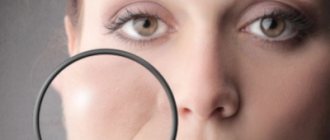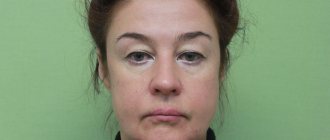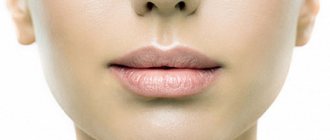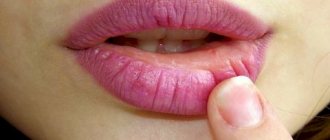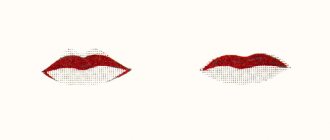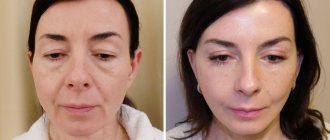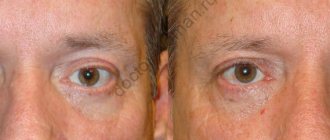Long nose
It is generally accepted that the most skilled seducers are men with long noses. For such a guy, just one glance is enough to conquer a pretty girl.
This type of man is very charming and knows better than anyone what a sense of humor is.
Being in the same company with him is fun and interesting. Those with long noses can find an approach to absolutely any girl.
However, if a young man has a long and thin nose, this may indicate that he is a proud and touchy person.
What does the nose shape of a potato look like?
A potato nose is a shape that has a thickening at the tip. This gives a rustic and kind appearance to its owner.
Unfortunately, not everyone is happy with this shape, and many people try to hide it using tricks. In addition to its aesthetically unattractive appearance, this form can lead to a number of ENT diseases.
This structure is characterized by a rosette of cartilage at its end and an excess of soft tissue.
Every year its shape can only thicken, which will lead to loss of skin elasticity.
Wide nose
People with wide noses are often distinguished by their openness and calm nature. In relation to his soulmate, such a man will be very attentive and generous.
A woman next to such a partner will always feel protected and confident in the future.
If the owner of such a nose has children, he will do everything to ensure that they have the happiest childhood.
This person craves to be in the spotlight and tries to achieve great results in his career.
Features of plastic surgery
Plastic surgery is a radical solution to the problem. This type of intervention is called rhinoplasty. Today this operation is popular, so it will not be difficult to find an experienced surgeon if desired. The main advantage is a visible result for life.
Don't forget about the disadvantages of surgery . The recovery period takes up to three months, so you won’t be able to appreciate the beauty right away. Rhinoplasty, like any surgical procedure, can come with complications. If you don't like the result, it can only be corrected after a second operation. In private clinics, surgery can be performed at the client’s request and without medical prescriptions.
In Moscow, the average price of an operation ranges from 100 to 400 thousand rubles. The cost depends on the complexity, fame of the surgeon and the level of the clinic. Only you can decide whether rhinoplasty is worth it, because a nose with a hump is purely a cosmetic defect.
Eagle's nose.
I think everyone can imagine what the Eagle’s nose looks like: an arched back, a pointed, hooked tip of the nose that drops below the level of the nostrils—in a word, the nose of the most evil cartoon character. It turns out that the art of reading faces identifies people with aquiline noses as the most cunning, insidious and crafty. At the same time, such seemingly negative qualities turn into very useful properties of the nature of the owners of the Eagle nose: resourcefulness, determination, independence and insight.
Celebrities with aquiline noses
The most famous owners of such a nose among historical figures are:
- Henry 4;
- Julius Caesar;
- Karl 5.
When you look at these people, you cannot call them ugly. The hawk nose in men is considered a symbol of courage, nobility and masculinity.
Modern celebrities can also boast of a thoroughbred nose. Among them are Hollywood stars:
- Sarah Jessica Parker;
- Gisele Bundchen;
- Meryl Streep.
These women are so rich and famous today that they could get plastic surgery from the best surgeons in the world. But these beauties prefer to live with Roman profiles and do not worry about the imperfections of their appearance. We mere mortals have a lot to learn from them.
Nose and septum
The external nose has the shape of a triangular pyramid. The bony part is represented by the nasal bones.
Connecting along the midline, they form the bridge of the nose.
Lateral to the nasal bones are the frontal processes of the maxilla, which are the lateral surfaces of the external nose. The nasal bones, frontal processes of the upper jaw, and the upper jaw form a pear-shaped opening, the edges of which are adjacent to cartilaginous formations. Triangular cartilages fit under the roof-shaped edge of the nasal bones. In the lateral direction they pass into fibrous tissue, reaching the edges of the pyriform opening. Adjacent to the triangular cartilages are large alar cartilages, which are located in the tip of the nose and nasal wings. Each of the cartilages forms two legs: the larger one, the lateral one, is located in the wing of the nose, the narrower one, the medial one, goes in the skin septum. Between the triangular and alar cartilages is the quadrangular cartilage of the nasal septum. The outer nose is covered with skin. The skin covers not only the outside, but also the inside of the surface of the wings, the septum of the nose and its bottom. In the specialized literature, many works are devoted to the nasal septum, the authors of which consider issues of pathology that are in one way or another related to the septum. Many works are devoted to methods of surgical correction, indications for surgery, surgical techniques and many other issues. We have not seen any work that examines the physiological role of the nasal septum. The nasal septum, dividing its cavity into two halves, creates a paired organ. But, regulated by the nasal cycle, these organs (halves of the nasal cavity) function at full capacity alternately, periodically resting. This complete rest is possible with a relatively flat nasal septum. A deviated septum does not allow the nasal cycle to fully manifest itself and create conditions for alternating rest. Due to the constant functional overload of one of the halves of the nasal cavity due to a deviated septum, after a few years chronic rhinitis develops in the wider half of the nose, leading to gradually increasing hypertrophy of the mucous membrane and increasing resistance to air flow, up to complete obstruction of the nose. Thus, we consider the main physiological function of the nasal septum to be respiratory and the creation of a paired organ - two halves of the nasal cavity. When fully implemented, the body is provided with oxygen to perform all numerous functions and processes. Nasal resistance is regulated by the blood filling of the cavernous bodies of the nasal turbinates and a general lumen of the nasal cavity is created, which is normally more than sufficient to adequately supply the body with oxygen. We also see that with a deviated nasal septum, even with one half of the nose completely blocked, some patients do not complain of shortness of breath or insufficient air supply. Complaints appear when there is a gradual enlargement of the turbinates on the side of the nasal cavity opposite to the curvature to such an extent that the lumen of the nasal cavity decreases and nasal resistance increases.
Having thus determined the physiological function of the nasal septum, the indications for surgery on the nasal septum should be considered differently.
The operation should be conservative; the basics of its technique were developed by V. I. Voyachek and were further developed in the works of other authors. When performing surgery, intranasal structures should always be corrected. You should strive for the most gentle treatment of the mucous membrane. Correction of the turbinates should be done submucosally. The goal of the operation should be to create halves of the nose of approximately the same size, the same configuration of the nasal conchae and the size of the nasal passages. This is not an easy task, but one worth striving for.
Nasal cavity
The nasal cavity communicates the body with the air. It is an air channel of various diameters, surrounded by the bones of the facial and cerebral parts of the skull, communicating in front through the nasal openings with the external environment, and in the back with the nasopharynx. The lateral wall of the nasal cavity is represented by: the nasal bone, the upper jaw, the lacrimal bone, the ethmoid bone, the palatine bone, the inferior nasal concha, the pterygoid process of the main bone. A feature of this wall is the presence of nasal conchas on it: inferior, middle, superior, which delimit the corresponding nasal passages. The nasolacrimal duct opens in the inferior nasal passage. Under the middle nasal passage, the anastomosis of the maxillary sinus, the anterior and middle cells of the ethmoid bone opens. The posterior cells of the ethmoid bone and the sphenoid sinus open into the superior nasal meatus. The floor of the nasal cavity is formed by horizontal processes of the upper jaw and palatine bone, which simultaneously serve as the basis of the hard palate.
Causes of a deviated nasal septum
- Nose injuries.
- Rickets suffered in childhood.
- Predominance in the growth of the bones of the brain skull over the facial one.
- Hereditary predisposition.
Types of deviated nasal septum
The diagnosis is made only by an ENT doctor, based on the complaints presented and examination of the nasal cavity using a nasal speculum or endoscope.
Indications for surgical treatment of a deviated nasal septum
- Difficulty in nasal breathing.
- Vasomotor rhinitis.
- Nosebleeds.
- Acute and chronic sinusitis.
- Snore. Occurs as a consequence of impaired nasal breathing
Treatment
Preparing for surgery
- General clinical minimum, including: blood tests, physician’s report, ECG, FLG, dentist’s report, x-ray of the paranasal sinuses.
- Half an hour before the operation, premedication is given - drugs are administered that enhance the effect of the local anesthetic and reduce the patient's sensitivity. Surgical treatment (septoplasty)
Surgical treatment (septoplasty)
- The operation is performed under local anesthesia in two ways: application - turundas with anesthetic are installed in the common nasal passage; infiltration - injection of anesthetic subperichondrium into the nasal septum. In rare cases, the operation is performed under general anesthesia.
- An incision is made in the skin of the nasal septum.
- The mucous membrane on both sides of the nasal septum is separated (i.e. peeled off).
- The curved parts of the quadrangular cartilage and bone structure of the nasal septum are isolated and removed.
- Stitches are applied.
Nasal tamponade
Finger tampons are installed for 24 hours (for minor bleeding);
When you leave the operating room, your nose will be filled with tampons and a “sling” bandage will be placed at the entrance to your nose. You will have to breathe through your mouth for the first 24 hours until your doctor removes the tampons. To reduce dry mouth, drink more fluids - it is better to stock up on mineral water or juice in advance. Try to walk less, although strict bed rest is not necessary. You can eat and drink, avoiding hot foods and drinks for several days. Typically, the doctor will prescribe intramuscular injections of antibiotics, which will begin on the day of surgery. Before going to bed you will be given painkillers and sleeping pills.
Breathing through your nose will not improve immediately after surgery. It usually takes several days for the swelling of the nasal mucosa to disappear and crusts to stop forming.
The patient's ability to work is restored after 4-5 days. After surgery, the patient should avoid physical activity for a month.
If there are exacerbations of concomitant chronic inflammatory diseases of the nasal cavity (sinusitis, etc.), they are first treated, and surgery for the nasal septum is performed no earlier than 2 weeks after the exacerbation.
Since the operation is accompanied by blood loss, for women it is performed two weeks after the end of menstruation.
Author
Sadrtdinov Alik Gadelyanovich
otorhinolaryngologist (ENT)
Candidate of Medical Sciences
24 years of experience
+7
What is the character of a person with a long and large nose?
- The owner of a large and long nose is stubborn and headstrong.
- Such a person knows how to earn money and has high demands on others, especially for those who are lower in status.
Long big nose and character
What kind of character does a person with a long nose with a slightly downturned tip have?
- The owner of a long nose with a downward curved tip has an analytical mind. Distinctive features are courage and determination.
- A person with such a nose is courageous and capable of quickly making informed decisions in extreme situations. A person with such a nose easily achieves career heights if only he sets himself such a task.
What kind of character does a person with a fleshy nose have?
- The owner of a fleshy nose is endowed with creative abilities. He is sincere, passionate and incredibly attractive to the opposite sex.
- His generosity and intelligence help to find like-minded people in his favorite business, and such a trait as his willingness to come to the rescue and direct all efforts to protect the victim helps to gain new useful acquaintances and true friends.
- If the owner of a fleshy nose is a representative of the fair sex, then her main qualities boil down to the following: they are good housewives and caring mothers.
Fleshy Nose and Character
What character does a person with a snub nose have?
- A person with an upturned nose has an excellent sense of morale. This is an optimist and a sensual nature.
- The owner of an upturned nose is characterized by sudden mood swings, but such changeability does not prevent them from charming others in the first minutes of communication.
What is the character of a person with a Greek nose?
- A person with a Greek nose is characterized by some stubbornness. He is hardworking and responsible. It is difficult to argue with him, because confidence in his own rightness is his main feature.
- However, if you praise such a person, it turns out that behind the mask of inaccessibility lies a rather subtle and vulnerable nature.
Greek nose and character
What character does a person with a small nose have?
- A small nose can tell a lot about its owner. For example, that its owner has a flexible character. Such a person is capable of making compromises.
- He is open and radiates optimism. A person with a small nose is easy to offend. He needs the support of loved ones and their approval.
What is the character of a person with a straight nose?
- A person with a straight nose has a strong character. He has a clear mind and exceptional aesthetic perception.
- He understands the intricacies of art and everything beautiful. As an employee, such a person is purposeful and successful.
A girl, woman, man has a hooked nose: what kind of character?
- A nose with a hump is not a flaw, but a beautiful facial feature that emphasizes the individuality of its owner. The shape of a nose with a hump is considered aristocratic and sophisticated, which affects the character. Suffice it to recall the story of the beautiful Nefertiti.
- A person with a hooked nose, regardless of gender, is brave and decisive. His judgments are rational, and his attitude towards finance is reasonable and logical.
- The income received is not spent just like that. Those with a hump nose are sensible. They devote a lot of time and attention to family and loved ones.
Humped nose and character
Characteristics of a woman with a hooked nose:
Representatives of the fair sex with such a nose are distinguished by a good mind. They are ambitious and strive, despite everything, to achieve personal happiness. The latter is guaranteed to bring success in work, business and any endeavor.
